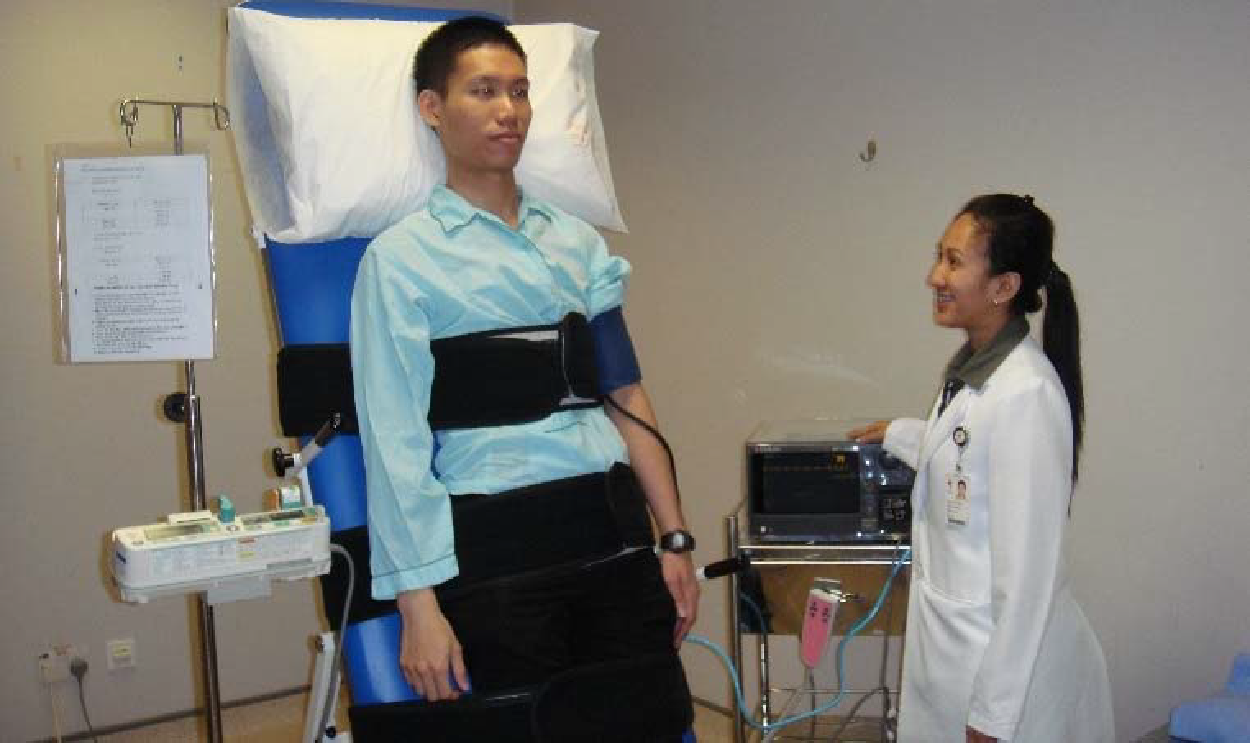
What is a Tilt Table Test?
A tilt table test is a test for investigating the causes of faints. Simple faints, also called vasovagal syncope or neurocardiogenic syncope, occur when something triggers an exaggerated response from the body's control system.
This results in an excessively low blood pressure and on rare occasions, excessively slow heart rate, which can make people feel faint, or even pass out. After fainting, the body is able to correct itself without treatment by assuming the lying down position. There are three components to this test, postural blood pressure test, carotid sinus massage test and the tilt table test itself.
Tilt table testing is designed to try to trigger a faint so that we can confirm the diagnosis and observe what actually happens.
Faints
Simple faints are benign, but they are a nuisance and potentially harmful if they occur in dangerous situations where falling results in injuries.
What is the Purpose of this Test?
This test is used to identify your tendency to simple faints, factors that trigger the problem, and the main reason for fainting. It can be due to low blood pressure, slow heart rate, or both.
What can I Expect?
This test is done at the Non-invasive Cardiac Laboratory. There is no need to stay overnight at the hospital for this test.
It takes about an hour and a half to prepare and perform the test. Your heart rate, blood pressure and electrocardiogram (ECG) will be monitored throughout the test by technicians and your supervising doctor. A small plastic tube or cannula will be inserted into a vein in your arm or hand to administer medication for the test.
You will first undergo the postural blood pressure test and then the carotid sinus massage test.
Postural Blood Pressure Test
You will be asked to get up quickly from a lying position to a standing position. Your blood pressure will be recorded before and after getting up, to assess for any significant drop in pressure.
Carotid Sinus Massage Test
The carotid sinus is located at the top of the neck, which contains a sensitive pressure sensor. Massaging the carotid sinus slows the heartbeat down significantly, which can trigger a faint. Carotid sinus massage is done one side at a time, first lying down flat, on a bed tilted at an angle of 70 degrees. If all is well after the first two tests explained above, you will then proceed to the tilt table test.
Tilt Table Test
You will be asked to lie on a couch which will be tilted to an angle of 60 degrees for half an hour. If all is well after half an hour, a drug called isoprenaline will be given as a continuous injection through the vein. You will feel your heart beating harder and faster when isoprenaline is given.
This is normal as the drug mimics adrenaline and the effects of stress and exercise on the heart rate. The dosage of isoprenaline increases every 5 minutes. After 15 minutes, the test will end. Administration of the drug will be stopped and the effects will wear off in minutes.
If the test triggers a fainting episode, you may feel faint. In the case when the episode is more severe, you may even pass out with a full faint, or have some associated feelings of nausea. Normally, if there are clear signs that you are about to faint, we will remove the tilt on the bed and lie you flat. Lying down flat can usually eliminate the fainting episode as your body would then be able to correct the faint by itself. If necessary, medications are available to help you recover from a faint.
Preparing for a Tilt Table Test
Come in clothing with a separate top and bottom to facilitate the test.
You can take your daily medications, if any, as per normal before the test, unless your doctor has instructed otherwise.
Please do not eat and drink for at least 6 hours before the test.
Please inform your doctor or technician if you have a medical record of stroke or problems with the arteries around the neck.
What are the Potential Risks/Complications With This Test?
Overall, this is a safe test. However, it can cause the following to occur:
It can trigger an actual faint, rather than just experiencing the feeling of faintness. If you faint, we will lie you flat and the body will recover from the faint. Sometimes, we will supply some fluid through the veins to speed up the recovery. Occasionally, some medication will be given to make you feel better faster.
Fainting is often associated with nausea and vomiting, so please fast for at least 6 hours before the test.
Isoprenaline can cause problems associated with a fast heart rhythm, but serious problems are rare. There will be a doctor present to treat such problems, if they arise. Serious problems such as a heart attack or stroke are extremely rare.
When Will I Know the Results?
The results of the tilt table test, together with the next step of your treatment, will be discussed at the next clinic appointment with your doctor.
